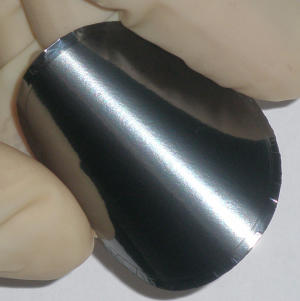Scientists Create New Conductive Paper w/ Graphene
Scientists in Switzerland have announced work on layering proteins with graphene, an allotrope of Carbon, to create a new kind of conductive paper. In a paper in the May 6th issue of the journal Nature, the researchers from ETH Zurichs Food & Soft Materials Science lab explain how they used traditional paper making techniques to build their new hybrid material; layering graphene with proteins and drying the mix in thin sheets. Different proportions of protein and graphene in the mix change the properties of the paper. For example, more graphene means the material will be more conductive, while more protein fibrils produce a more absorbent material that responds quickly to changes in humidity. (Interestingly, the material has shape memory and when it dries out will return to its original shape.) Could this technology and graphene be used to ‘grow’ circuity for computers or solar panels in the future?

The protein, in this case, beta-lactoglobulin, a milk protein, is first denatured by high temperatures in an acidic solution. The end-products of this denaturation process are protein fibrils suspended in water; these fibrils then act as stabilizers for the hydrophobic graphene sheets and allow them to be finely dispersed in water and processed into nanocomposites by a simple filtration technology.

Comments are closed.